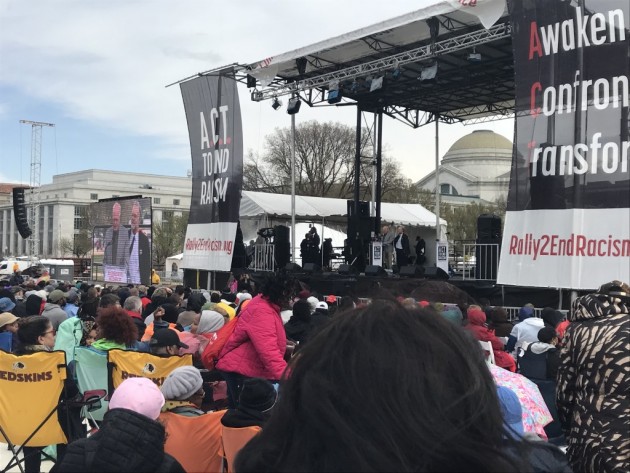A human chain zigzagged around the upper floor of the Smithsonian National Museum of American History, with visitors who had waited hours to see “September 11: Remembrance and Reflection.” They were eager to glimpse recovered belongings, now historic artifacts, from a deadly tragedy that is etched in the collective American psyche and that irreversibly changed the country’s worldview.
While others silently waited for the line to move closer to the entrance of the exhibit, some made light of the inchworm progression.
“It’s like Disney World,” exclaimed a woman wearing a psychedelic blue floral blouse and grey Sketcher sneakers. The ever-growing crowd reminded her of the swarm of people at the “Happiest Place on Earth.”
But smiles soon gave way to sniffling as visitors got a firsthand glance at everyday items whose simplicity was forever changed by the terrorist plane crashes that took place a decade ago in New York, Pennsylvania and Virginia. A box of Kleenex sat near the edge of the table displaying artifacts from the United Airlines Flight 93. The plane crashed outside Shanksville, Pa., after passengers turned on their hijackers. All 40 crew members and passengers perished.
“Reflection and Remembrance” marks the first time that recovered items from the Shanksville crash are being publicly displayed. The items included the warped scraps of the airplane, charred seat belts and a personal logbook from a flight attendant, Lorraine Bay, which was donated by her husband.
The other three tables featured everyday objects retrieved from the attacks on the Pentagon and the World Trade Center. They also included items that emerged from the creation of the Transportation Security Administration in a post-9/11 world. The TSA was created on Nov. 19, 2001,following the passage of the Aviation and Transportation Security Act.
The first thing visitors see at the World Trade Center table is a life-sized photo of a missing persons board. Then they cast their eyes over a debris-covered briefcase with one strap snapped off. The briefcase was returned to an executive of Aon Risk Services who escaped from the South Tower of the World Trade Center after the first plane struck the North Tower at 8:46 a.m.
At the Pentagon table, an elderly man asked curator Cedric S. Yeh to point out on an enlarged map of the Pentagon’s layout where American Airlines Flight 77 struck, killing 125 people and injuring 140. Some visitors were emotionally shaken up after reading the postcard that the late Leslie Falkenberg (née Whittington) sent to her sister with her family’s new address in Chevy Chase, Md. Falkenberg, her husband and their two daughters were on board Flight 77 heading for Australia.
Falkenberg’s final postcard and other personal items from the Pentagon site were displayed in the open, without a single sealed glass encasing them.
Yeh told a huddled group of exhibit-goers that the museum’s “no cases” approach was meant for visitors “to experience the objects for themselves”— albeit with signs showing a silhouetted hand encircled and crossed out in red reminding them they could see history without touching its artifacts.



